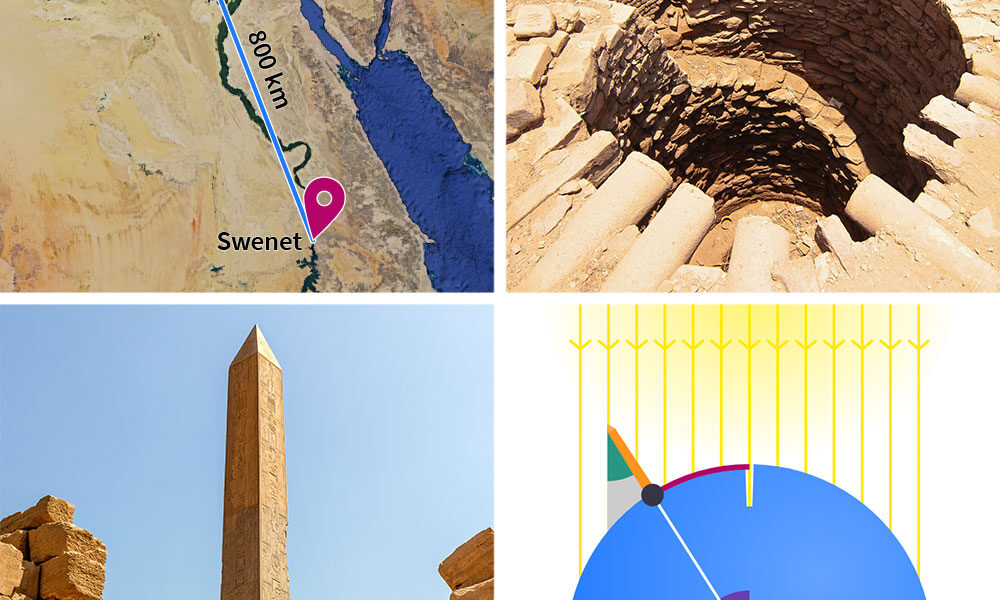How an Ancient Greek Mathematician Calculated the Earth's Circumference with a Stick and His Brain.
While in the mid-20th century, satellites were used to determine the exact circumference of the Earth, which was found to be 40,030 km. Over 2,000 years earlier in ancient Greece, Eratosthenes used a stick and his brain to arrive at nearly the exact figure.
Eratosthenes, a Greek mathematician and head of the library at Alexandria, deduced the Earth's spherical shape and calculated its circumference by measuring the difference in shadow length between a stick planted in Alexandria and another in Syene, a city south of Alexandria on the summer solstice.
By hiring someone to pace the distance between the two cities and using simple proportions, Eratosthenes estimated the Earth's circumference to be around 40,000 kilometres, a remarkably accurate figure given the available technology of his time.
Eratosthenes was born in Cyrene, a Greek colony in modern-day Libya, in 276 BC. He later moved to Alexandria, where he served as the chief librarian at the Library of Alexandria, one of the ancient world's most important learning centres.
In addition to his work in mathematics and astronomy, Eratosthenes was a noted poet, historian, and geographer. He is credited with creating one of the world's earliest maps and an influential work on the geography of the known world called the "Geographica."
Eratosthenes' calculation of the Earth's circumference was an impressive feat of ancient science and mathematics, and it laid the foundation for many subsequent discoveries and innovations in these fields. He died in Alexandria around 194 BC.

